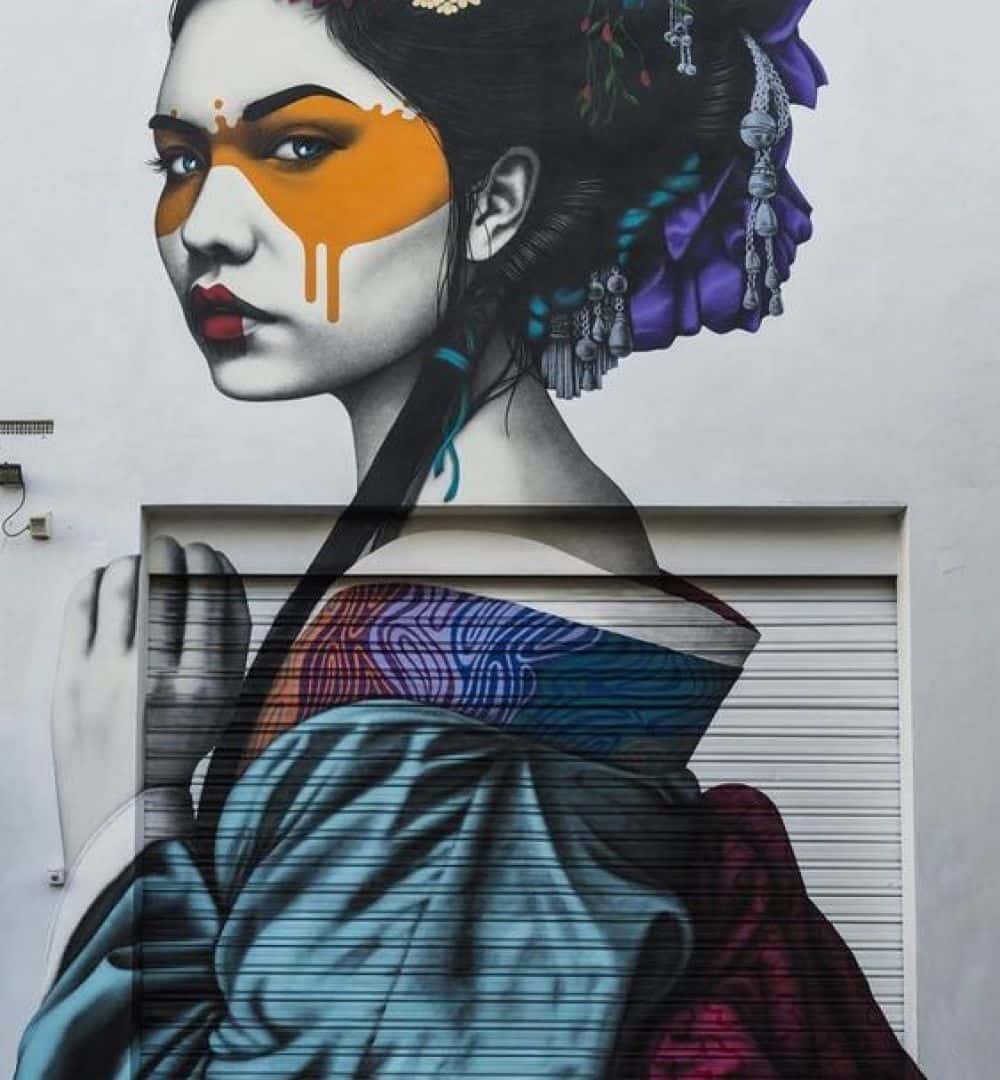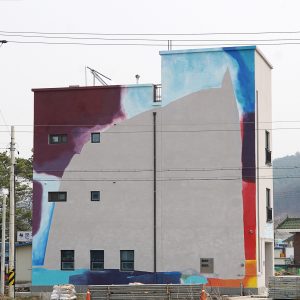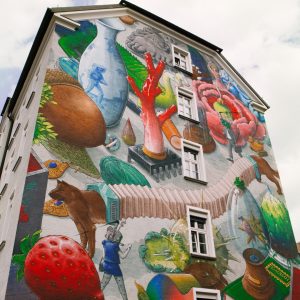Berlin artist Johannes Mundinger paints Benkhauser Mill. The Benkhauser Mühle is localy known for its select assortment of pet food and gardening articles. The actual mill, which stands at the back of the property, is less conspicuous. This changed last weekend, when Johannes Mundinger painted the southern façade with a typical mural, as part of his project Feldforschung.
Under this title he paints barns and buildings in the countryside, showing his work in environments far from established exhibition venues or big cities, to bring some unexpected perspectives to the visitors. In the motifs, he takes up the stories of residents or the owners and what he learns about the building and environment, about its use and function during the times.
A mural often takes up an entire house façade. Johannes Mundinger also likes to use the entire surface of a façade, so that his abstract works can sometimes be 10 to 15 metres high, as for example at the Art Space ATEA in Mexico City or the mural at the Neulpureun School in Yeoju in South Korea.
The artist didn’t have to go quite that high this time, but a scaffold was still needed to paint the seven-metre-high mill wall. The artist, who lives in Berlin, had already done some research on the mill beforehand. A typical approach for him is to incorporate the history and function of a building into his work. To learn more about the Benkhauser Mühle, Johannes Mundinger had a long talk with senior manager Marlis Meyer, who could tell a lot about the history of the mill.
She told how the mill was actually first powered by the stream Flöte, which flows directly along the property, and was only later expanded by wind power. The two ponds in which the water was dammed were also used to make ice. These ice blocks were delivered by horse-drawn carts to the local brewery, where they were used for cooling, Marlis Meyer recounted. If you look closely at the newly created mural, you can spot the two mill ponds in the picture. The wing that broke off the mill in the early 20th century has also found its way into the composition of the picture, Johannes Mundinger continued. In his conversations with Marlis Meyer, Johannes Mundinger learned about many exciting stories about the mill, some of which the senior manager illustrated with newspaper articles that she keeps in a small newspaper archive. These stories then flow consciously or unconsciously into the painting in the process of painting.
As further inspiration, Johannes Mundinger looked at microscopic photographs of wheat flour and incorporated these views into the composition. Here, Johannes Mundinger has detached himself from the realistic image; colour and plasticity are left out and are not depicted.
Abstraction and omission or even overpainting are an essential part of Mundinger’s art. Figurative representations are rather rare here. It is more a matter of capturing the essence of something and then depicting only the essentials. The play with levels, surfaces and forms also takes up a lot of space. Surfaces are often superimposed and juxtaposed to create abstractions, but also spatial depth.
The project was funded by Kreis Minden-Lübbecke with material support of Yes and Productions, Berlin.







































comment